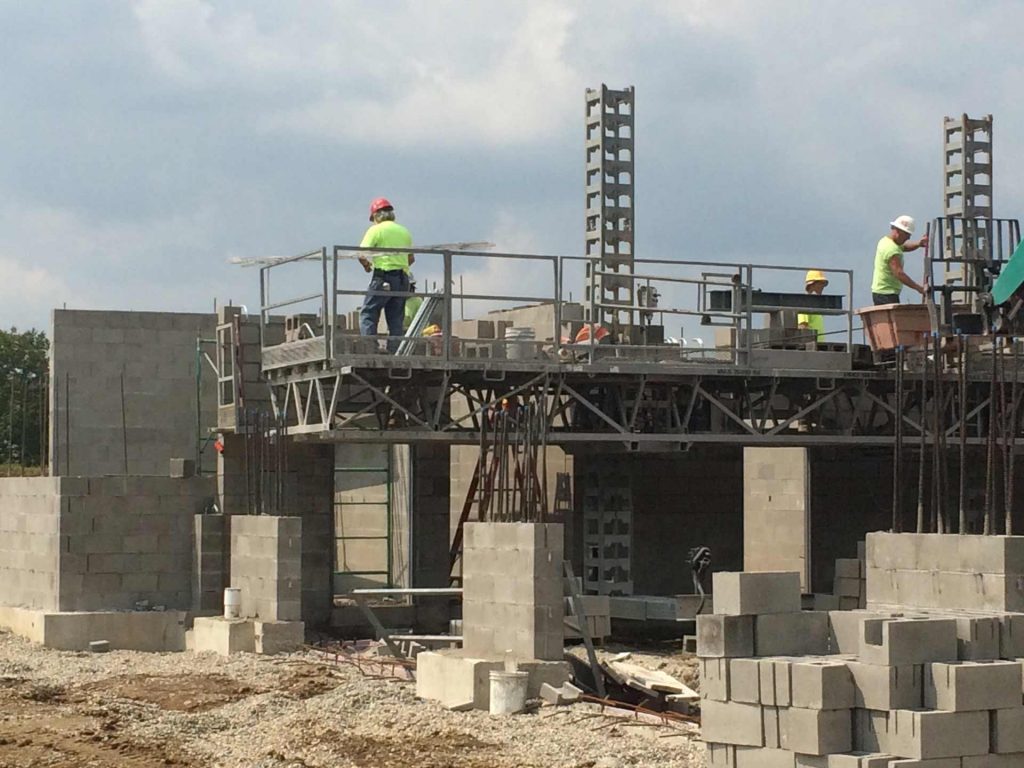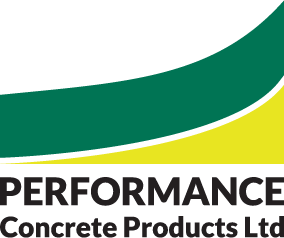AUTOCLAVED AERATED CONCRETE
Autoclaved Aerated Concrete (AAC) is a fully integrated building system consisting of blocks and panels, made for the next generation. AAC has been used throughout the world for decades, although its existence and use has not been widely recognized.
FORMS OF AAC
Block
U-Block
Jumbo Block
Lintels
Floor, Roof & Wall Panels
Trim Panels
Power Panels
ATTRIBUTES OF AAC

Strong
Dimensional accuracy and compressive strength allow AAC to be used in many load bearing applications. Installed using thin-bed mortar, the resulting wall functions as a monolithic structure.
Lightweight
Because AAC block weighs 35 lbs per cubic foot, in comparison to standard concrete’s 130 lbs per cubic foot, AAC provides significant benefits where weight is a concern in building design. The light weight also provides beneficial installer safety and fatigue features.
Fire Resistant
The same properties that make AAC thermally efficient also provide exceptional fire resistant characteristics. This non-flammable material provides a minimum of 1/2 hour fire resistance per inch. Tested by Underwriters Laboratory (UL), AAC was found to provide an unprecedented fire rating of up to 8-hours for 8” thick block. AAC is an inorganic, solid building material that does not burn. The ultra-lightweight cellular structure makes AAC an exceptional heat insulator while boosting its fire resistance. AAC sets the standard for fire safety.
Pest Resistant
AAC is an inorganic material impervious to rot, insects, and other pests. Buildings constructed over sixty years ago in many different climates have proven AAC to be one of the most durable building materials available. Since the walls are solid, it is not possible for termites and other pests to inhabit and breed as in most ordinary wall systems. Without concern for termites and other insects living in an AAC wall, chemical treatment can be eliminated.
Energy Efficient
The manufacturing process creates millions of tiny air cells that provide excellent thermal resistance. This thermal resistance combined with the benefits of thermal mass inertia, whole wall coverage and low air infiltration will, in many areas, eliminate the need for additional insulation. The products are solid and self-insulating. The density of an AAC wall provides an inherently energy efficient wall system by combining high insulation properties with thermal mass, a property that enables the building envelope to absorb, store and recycle energy. Thermal mass slows heat transfer through the wall so that outdoor temperatures have less effect on indoor temperatures. Better temperature and humidity control also provides greater comfort while reducing energy equipment needs. The unique ability of AAC to delay peak heating and cooling loads contributes to enhanced energy performance and reduced energy costs. Without additional insulation, an AAC wall can reduce heating and cooling costs below the cost experienced with ordinary insulated wall systems.
Sound Insulated
A wall constructed with eight-inch-thick AAC has a Sound Transmission Class (STC) of 45 when tested in accordance with ASTM 1190-90 and a Noise Reduction Coefficient (NRC) of 0.40. AAC is an ideal building material for walls and partitions separating dwelling units from each other or from public spaces due to the combination of sound, weight and fire resistance properties. In practice, AAC has been proven to be one of the best solutions for noise reduction.
Breathable
Another benefit of an AAC wall is the approved stucco and acrylic finishes that are breathable while still being water resistant. Interior and exterior finishes have been formulated as one-way moisture barriers allowing vapor to escape thus preventing condensation, mildew and potential structural damage. In addition, cladding such as brick veneer, stone or siding may be applied to AAC walls.
Workable
AAC can be easily cut and shaped using standard construction tools. This attribute provides designers with a flexible yet strong material for all matter of architectural design details, e.g. keystones, joins, commercial signage, parapets, etc. AAC is installed with a thin-bed mortar providing significant installation efficiencies.
Cost Effective
Independent analysis have demonstrated that AAC assemblies are more cost effective than many traditional construction methods, including concrete block, tilt up, and precast concrete. Building owners ongoing operational costs may also be reduced by lower energy bills and reduced maintenance expenses. The cost history of the locally-sourced raw materials will result in a building material that will provide the construction industry with a high degree of price stability when compared to other building materials.
WHY BUILD GREEN?
Performance Concrete is committed to protecting the environment through the use of green building materials. Green structures are energy-efficient and environmentally-friendly by minimizing pollution and waste as well as reducing the overall impact to the environment. Absolutely no pollutants or hazardous wastes are generated in the process and pure AAC can be reused and recycled into other useful products. Even the production method conserves energy since steam curing is carried out at high pressures and thermal energy is recovered and reused for maximum efficiency.
Green buildings have many other advantages, too. They cost less to operate because of the reduced energy usage, require less maintenance, have better indoor air quality, and have excellent resale value. Building green shows your commitment to the environment and gives you the assurance that the mark you leave will benefit the future of our Earth.
BUILDING CODES
Performance Concrete Products represents Aercon Florida’s AAC, which is compliant on all required building codes. The seismic test results are also available upon request.
- ICC International Compliance Report
- SBCCI, ICBO/UBC, BOCA Accepted
- ASTM C1386-98 for AAC Wall Construction Units
- ASTM C1452-00 for Reinforced AAC Elements
- ACI 523.5 Draft Recommended Practices for AAC
- UL-263 Fire Resistance
- ASTM Sound Transmission Class 6”, 8”, 10”
ASTM STANDARDS & APPROVALS
Below is a list of standards and approvals. Please choose from any of the following to view more details.
ASTM C 140
“Sampling and Testing Concrete Masonry Units”
Certain physical characteristics of the Aercon precision blocks are important for the environmental design of a building. This test method provides the means for the proper sampling of and testing of Aercon precision blocks in order to determine their absorption. The absorption determined by this test method was 11.9 pcf for AC2 and 12.1 pcf for AC4. Further absorption characteristics are described in Chapter VII – Construction Physics, Section C ” Moisture Behavior.”
ASTM C 426
“Drying Shrinkage of Concrete Masonry Units”When designing and construction buildings, an allowance must be made for the normal drying shrinkage of the construction as the materials stabilize to their final environmental conditions. If the typical drying shrinkage is not properly compensated for, cracking may result at restrained locations around the building envelope.
This test method provides a standardized procedure for determining the drying shrinkage of the Aercon precision blocks, as well as other concrete products, when dried according to certain accelerated conditions. The drying shrinkage, expressed as a percentage, is the change in length of the test specimen due to drying from a saturated condition to an equilibrium weight and length when subjected to the pre prescribed accelerated drying conditions.
Tests were run on Aercon precision blocks using AC2 and AC4 strength categories. Drying shrinkages of 0.06% and 0.039% were determined respectively for the AC2 and AC4 strength categories.
ASTM E 72
“Standard Methods of Conducting Strength Tests of Panels for Building Construction”In order to achieve the proper structural design of a building for wind loads, he flexural bending strength of the basic structural elements used in the construction must be known. This test method provides a basis for obtaining the flexural bending strength by means of the application of a uniform pressure to the entries test wall surface, simulating wind pressure on the actual construction.
The test specimen walls were constructed using nominal 8 inch (20 cm) thick Aercon precision blocks, with dry densities of 25 pcf (AC2) and 31 pcf (AC4), in a running bond pattern, for determining the flexural tensile strength perpendicular to the wall bed joints. A large air bag was placed between the specimen and a reaction frame. The air pressure within the bag was noted and the ultimate flexural tensile strength, standard deviation and coefficient of variation were calculated. The average flexural tensile strength of both densities was virtually identical. The failure mode for flexure is reproducible and controlled by the precision block material rather than the mortar joints.
ASTM E 90
“Laboratory Measurement of Airborne Sound Transmission Loss of Building Partitions”The performance of walls, floors and other building assemblages in reducing the sound from one side of the assemblage to the other is important in terms of the comfort of the occupants of the building, whether it is a single family residence or a multi-story office structure. This test method measures the sound transmission loss in decibels (dB) in the frequency range of 125 to 4000 hertz.
Two separate tests were performed, one on a nominal 8 inch (20 cm) thick AC4 Aercon precision block wall coated with 1/2 inch of lightweight stucco on the outside and 1/4 inch of gypsum based plaster on the inside and the second on a nominal four-inch (10 cm) AC6 Aercon wall panel wall with both surfaces coated with 1/4 inch of cement based smoothing compound. The nominal 8 inch thick wall achieved a Sound Transmission Class (STC) rating of 44 and the nominal 4 inch thick wall achieved a Sound Transmission Class (STC) rating of 36.
ASTM E 119
“Standard Test Methods for Fire Tests of Building Construction and Materials”The performance of walls, floors and other building assemblages under exposure to fire is important for the safety and security of the occupants of the building, their belongings and the building contents. This test method measures the fire-resistive properties of the assemblage materials when subjected to a standard fire exposure and provides for a relative measure of the ability of the assemblage to prevent the spread of the fire. After the assemblage is subjected to the standard fire exposure, it is subjected to a standard fire hose stream of water, intended to simulate the effects of fire fighting efforts. The assemblage must successfully pass both portions of the test in order to achieve a certain fire rating.
Testing was performed on two walls, one constructed of 4 inch (10 cm) thick Aercon wall panels and one ofno9minal 8 inch (20 cm) thick Aercon precision blocks. The materials were assembled into typical wall panels, approximately 10 feet high and 11 feet wide. The 4 inch thick wall panels performed satisfactorily for a Fire Resistance Rating of 3 hours and 10 minutes. The 8 inch thick precision block wall performed satisfactorily for a Fire Resistance Rating of 6 hours and 6 minutes.
ANSI / UL 263
“Standard for Fire Tests of Building Construction and Materials”
The performance of the roof, floors and walls under exposure to fire is important for the safety and security of the occupants of the building, their belongings and the building contents. This standard test method determines the restrained and unrestrained rating for roofs and floors and the bearing and nonbearing rating for walls when subjected to a standard fire exposure with a superimposed load, simulating the maximum loaded condition. The Standard provides for a relative measure of the ability of the assemblage to prevent the spread of the fire and retain its structural integrity. After the assemblage is subjected to the standard fire exposure, its subjected to a standard fire hose stream of water, intended to stimulate the effects of fire fighting efforts. The assemblage must successfully pass both portions of the test in order to achieve a certain fire rating.
Two Aercon panels assemblages, UL K910 (8 inch thick floor panel assemblage) and UL P933 ( 8 inch thick roof panel assemblage, were tested. Both assemblages achieved a Restrained Assembly Rating of 4 hours (using Type 1 panels) and an Unrestrained Assembly Rating of 1 hour (using Type 1 panels) and 1 1/2 hours (using Type 2 panels). The two types of panels tested had a different minimum amount of cover over the reinforcing; Type 1 with a minimum cover of 20 mm and Type 2 with a minimum cover of 45 mm. Restraint was provided by means of a poured-in-place, reinforced, concrete ring beam around the perimeter of the test assemblage. By virtue of the types of panels tested, 10 and 12 inch roof and floor panel assemblages also have the same Restrained Assembly and Unrestrained Assembly ratings.
An Aercon block wall assemblage, UL U921, achieved a 4 hour Bearing Wall Rating and a 4 hour Nonbearing Wall Rating with a minimum 6 inch thickness a Strength Class of AC6/650. Based upon the thermal properties of this Strength Class, the remaining Strength Classes also have the same Bearing Wall Rating and Nonbearing Wall Rating of 4 hours.
ASTM E 447
“Compressive Strength of Masonry Prisms”
In order to achieve the proper structural design of a building for gravity loads, the compressive strength of the masonry assemblage must be accurately known. This test method provides a basis for obtaining this engineering property by the application of a compressive load to the prism by means of a spherically seated, hardened metal bearing block above the specimen and a hardened metal bearing block below the specimen. This ensures that a concentric load is applied uniformly over the entire area of the prism. The results of the tests provide the engineering design property known as the minimum compressive strength of masonry (fm). The minimum compressive strength of masonry is then used in the determination of the allowable axial stress, the allowable compressive bending stress and the compression moment resisting capacity of Aercon precision block assemblages.
The results of this test method determined that the minimum compressive strength of masonry (fm)was 348 psi for AC2, 580 for AC4 and 870 for AC6. (Reference “Properties of Aercon Products”, Chapter II – Survey.)
ASTM E 514
“Standard Test Method for Water Penetration and Leakage Through Masonry”
Buildings must perform well under severe weather conditions including frequent, intense thunderstorms accompanied by high winds. The wall systems used in typical building construction must be able to stop the rain from getting into the interior of the building envelope.
This test method provides a means whereby an entire wall assembly is subjected to an application of water equivalent to 138 l/m2 (3.4 gal/ft2) per hour with an air pressure of 500 pa (10 lbf/ft2) – which is equivalent to a 62 mph wind force and 5 1/2 inches of rain per hour. Test walls were constructed of AC2 strength category block and of AC4 strength category block. Under these severe test conditions, no water passed through any of the test walls of either strength category.
ASTM E 518
“Standard Test Methods for Flexural Bond Strength of Masonry”
The two methods delineated in this standard cover the determination of the flexural bond strength of unreinforced masonry assemblages. Both test methods utilize a masonry prism as a simply supported beam, uniformly loaded by means of an air bag in one method and third-point loaded in the other. The failure load is then used in calculating the gross area modulus of rupture. A series of tests were run using nominal 8 inch (20 cm) thick Aercon precision block in the AC2 and AC4 strength categories.
ASTM E 519
“Standard Test Method for Diagonal Tension (shear) in Masonry Assemblages”
In order to achieve the proper structural design of a building for resisting lateral wind loads by means of shear walls, the strength and rigidity of the basic structural elements used in the shear wall construction must be accurately known. The test method presented in this standard provides an accurate means to measure the diagonal tensile (shear) strength of masonry assemblages. The specimen size permits a reasonable evaluation of the shear strength that would be representative of a full size masonry wall used in actual construction. The masonry assemblages are loaded in compression along one diagonal of the specimen. This results in a diagonal tension failure with the specimen splitting apart in a direction parallel to the load application.
The test specimen walls were constructed using nominal 8 inch thick Aercon precision block strength categories of AC2 and AC4, in a running bond pattern. The specimens were then placed into the testing machine with diagonal axis positioned in a vertical manner. The load on the specimen was increased until failure of the specimen occurred.
The failure pattern of each specimen was noted and average shear strength, standard deviation and coefficient of variation were calculated. The reproducible failure mode indicated that the strength of the Aercon precision block controlled the shear failure performance. this is in contrast to the failure of the mortar joints, which is common in typical clay and concrete masonry unit construction.

